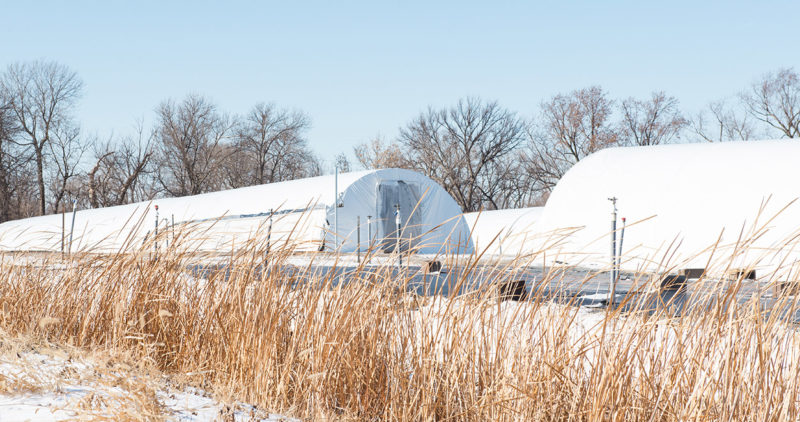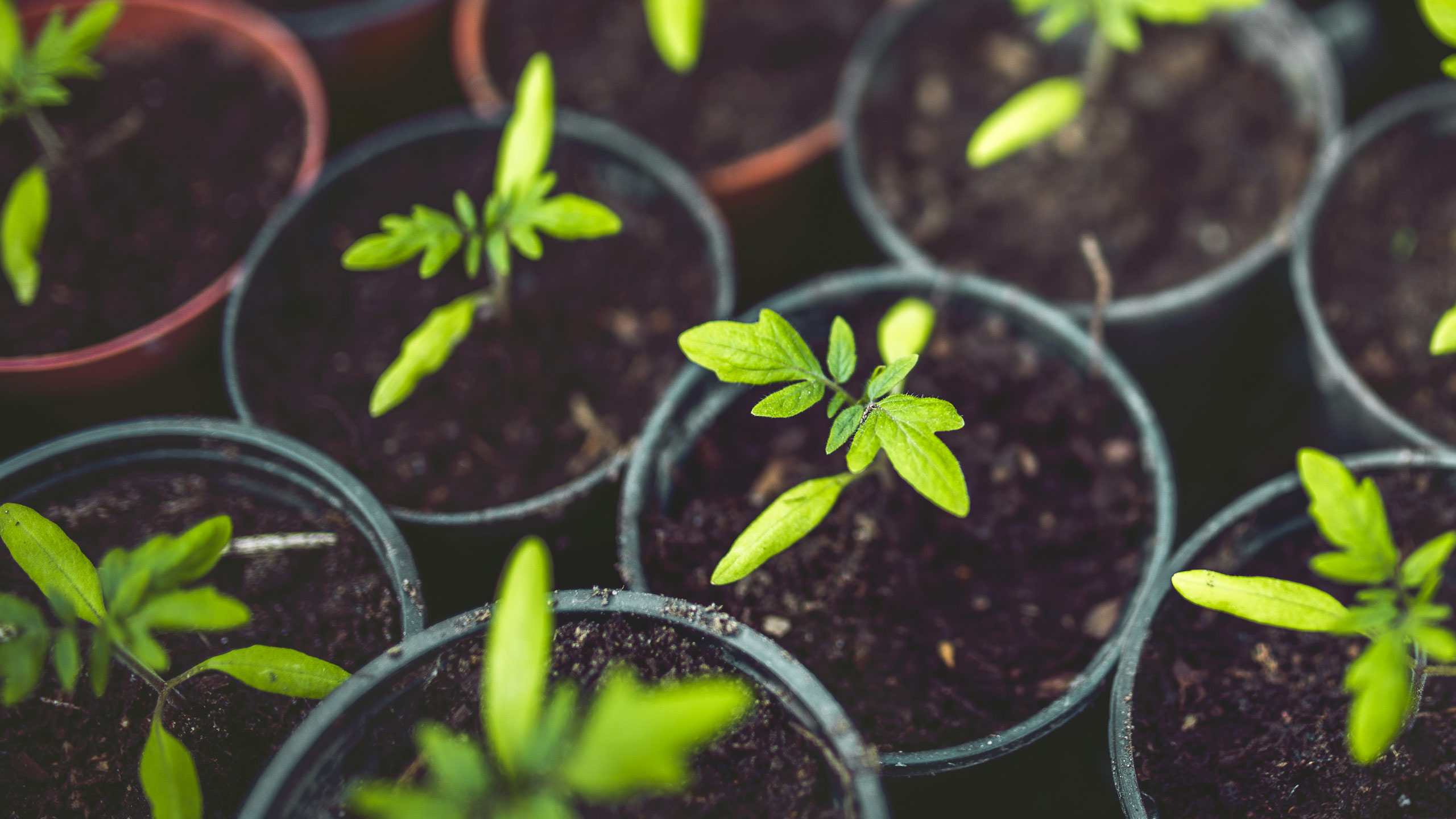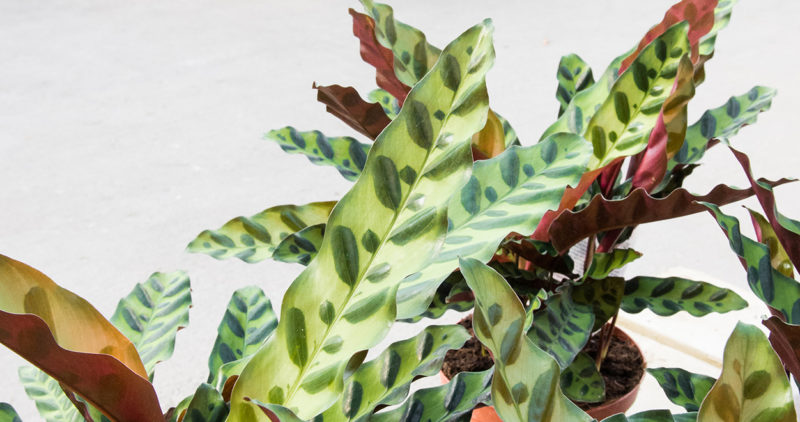
We know it’s agonizing to wait – the official start of our growing season in May seems so far away. Fortunately, we also know a way to appease that anxious green thumb right now. In Seed-Starting, a seminar in our Urban Homesteading series, Woody Wood will show you how to successfully plant and grow garden seeds indoors in the winter. Woody is a member of our Plant Care team, and she loves to share her experience and explain the rewards she finds in starting her garden long before the growing season officially starts. As she prepares for her seminar on February 24th, we talked with Woody about some of the ways starting seeds indoors can benefit our gardens through the spring and summer. While growing these little seedlings is a fun hobby all by itself, early seed-starting also allows you to control conditions and timing, so you can get an early and successful jump-start on your garden. Seeds also provide a wider variety of plants to grow and they allow you to grow a larger crop for your investment.
Seeds Give Us More Control
Want the first homegrown tomato on your block in the summer? Starting seeds indoors in the winter allows us to play with Mother Nature’s schedule a bit and start the growing season early for some of our plants. Indoors, we can control variables like temperature, water, and light to give our seeds a strong start under optimal conditions for their growth and production. Then, when the ground warms up in May, our plants are already strong and ready to go when other gardeners might be just starting from seed. At home, Woody starts seeds from vining crops like squash, pumpkin, zucchini, and decorative gourds a couple weeks before our predicted last frost. Two weeks doesn’t seem like a big difference – and these varieties are easy to direct sow outdoors – but Woody likes to make sure that outdoor weather conditions and soil temperature are just right before transplanting these vegetables outdoors and subjecting them to Mother Nature’s variables.
And some varieties of seed need to experience a special set of conditions before they can germinate. Planted directly outside, the seeds might experience these conditions naturally, but they’d also be subject to harsh weather changes, imperfect soil conditions, and foraging critters that might reduce the number of seeds that successfully germinate and grow bigger. Recreating these special germination conditions for seeds indoors is called stratification, and it significantly increases the number of seeds in a packet that successfully germinate. Not all seeds benefit from stratification, but many perennials do. For example, milkweed seeds need a period of damp, chilly conditions to germinate. Woody stratifies milkweed seeds by planting them in damp peat pellets and storing the pellets in the refrigerator for a few weeks. Other seeds have different requirements, which can be found inside the seed packet. Woody will also explain all the details in her seminar.
Seeds Expand our Choices
There may be thousands of annuals, perennials, herbs, and vegetables that are commercially available as started plants already growing in pots in the spring, but some unusual or heirloom varieties are only available to gardeners in seed form. For example, ‘Moneymaker’ is an heirloom tomato from England that produces abundant, flavorful fruit used for slicing and sauces. ‘Speckled Roman’ is another tomato that’s excellent for sauces, and their elongated red fruits are striped with interesting orange squiggles. If you’re interested in planting a way station for migrating monarch butterflies, you’ll find varieties of milkweed, sunflower, and coneflower among our seeds too. And kids enjoy growing unique varieties of decorative gourds, pumpkins, and squash with their interesting shapes and colors. For Woody, there’s a special yellow crookneck squash that her family enjoys. It’s available in seed form and she starts it early indoors every year.
Seeds Mean More Plants for Less
Starting seeds also allows you to grow a larger number of plants with less investment – even after you factor in the initial cost of trays, pots, light bulbs, and soil. Woody says this is especially true for situations when you need a large harvest of a certain crop. Maybe you plan to can tomatoes at the end of the season or you’re planting for a large group of people – like in a community garden. One or two dollars will get you dozens of seeds in a packet and thus dozens of plants to grow. You can also expand the variety in your garden with no additional cost by trading your extra seeds with a neighbor for something different. Most seed-starting supplies – like trays, pots, and domes – are reusable if you wash and sanitize them between crops. And in her seminar, Woody will share tips for using small plastic cups and other recyclables for seed starting too.
If getting a jump-start on your garden and growing all kinds of unique flowers and veggies sounds intriguing, we hope you’ll join us on February 24th at 10am and 2pm for Seed Starting. Just give us a quick call at 402-496-0700 and let us know you’ll be here.



